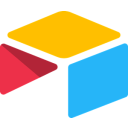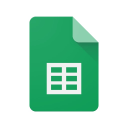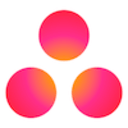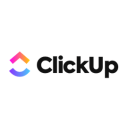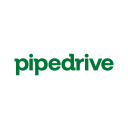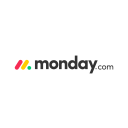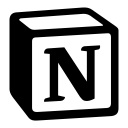Airtable vs SeaTable: Choosing the right platform
- 01Airtable vs SeaTable: overview
- 02What's the difference between Airtable and SeaTable?
- 03Airtable pros and cons
- 04SeaTable pros and cons
- 05Airtable compared to SeaTable
- 06SeaTable compared to Airtable
- 07Features comparison
- 08Airtable vs SeaTable: Which is the best for your business?
- 09Promotions on Collaboration software
- 10Alternatives to Airtable & SeaTable
Save up to $1,000 on Airtable
Save up to $1,000 on Airtable
Project and database management is essential for delivering a streamlined, organized workflow within any business. Yet, managing these tasks effectively involves multiple considerations, from easy collaboration to robust data handling capabilities.
To help you navigate this landscape, we've compared two of the leading platforms in this space—Airtable vs SeaTable. These tools offer distinctive features and integrations, but they cater to slightly different use cases and preferences. By delving into their key differences, features, and potential applications, this article aims to provide you with all the necessary information to decide which tool is better suited for your business needs. By the end of this guide, you'll be better equipped to choose the right platform for optimizing your project management and data organization processes.
Airtable vs SeaTable: overview
Airtable and SeaTable emerge as two significant players in the world of online database and project management solutions, each equipped with unique strengths to cater to varied user needs.
Airtable is celebrated for its highly customizable interface and extensive integrations, making it a favorite among businesses that require flexible, scalable database solutions. Its ability to seamlessly connect different data types and automate workflows allows users to create a tailored fit for complex project requirements. On the other hand, SeaTable focuses on combining the simplicity of spreadsheets with the power of databases. It offers a similar range of functionalities but with a stronger emphasis on user-friendly design and efficient data management, making it ideal for teams that prioritize ease of use and quick deployment.
Choosing between Airtable and SeaTable depends heavily on your specific business operations, the complexity of the projects, and the level of customization required. Airtable might be the better choice for those who need a highly adaptable platform that can integrate with numerous other tools, while SeaTable could be more suitable for those looking for a straightforward, efficient way to manage data and tasks without a steep learning curve.
What's the difference between Airtable and SeaTable?
Airtable and SeaTable are both versatile project management and database tools that cater to the needs of modern businesses, yet they cater to slightly different user preferences and requirements. The main difference between Airtable and SeaTable lies in their user interface designs, customization capabilities, and specific features that make each suitable for different types of projects and workflows.
Airtable is widely recognized for its rich customization options and powerful automation features. It offers a highly flexible platform that allows users to build and link complex databases with ease. This adaptability makes Airtable ideal for users who require deep customization, such as creating unique workflows, integrating with multiple applications, or managing complex project timelines. It supports a broad range of integrations with other tools, enhancing its functionality for users who need a highly interconnected system.
On the other hand, SeaTable focuses on combining the simplicity of spreadsheet management with the robustness of a database, making it particularly user-friendly for those accustomed to Excel or similar programs. While it offers fewer customization options than Airtable, it provides essential features in a more accessible format, which can be particularly appealing for teams looking for a straightforward, no-frills approach to database management. SeaTable also emphasizes visual data management, with features like drag-and-drop interfaces, making it easier for teams to collaborate and share information efficiently.
Another distinction is how each platform approaches user collaboration and pricing structures. Airtable provides a more granular permission system and advanced collaborative features suitable for larger teams or enterprises, whereas SeaTable offers a simpler, more cost-effective solution for small to medium-sized businesses or teams that do not require extensive permission customizations.
The choice between Airtable and SeaTable should be guided by the specific needs of your project or business. Airtable is likely the better option for users who need a dynamic, highly customizable system capable of handling complex workflows and data integration. In contrast, SeaTable is more suitable for those who prefer ease of use and efficiency in managing straightforward projects and databases without the need for extensive customization.
Airtable pros and cons
What are the advantages of Airtable?
- Flexibility and customization: Airtable allows users to create custom databases that suit their specific needs. You can easily customize fields, views, and workflows without extensive technical knowledge.
- Integration capabilities: It integrates well with many other tools and services, such as Slack, Google Calendar, and more. This makes it easy to automate workflows and sync data across platforms.
- User-friendly interface: Its interface is intuitive and resembles a spreadsheet, making it easy for users familiar with Excel or Google Sheets to get started quickly.
- Collaboration features: Airtable supports real-time collaboration, allowing multiple users to work on the same database simultaneously. Comments, mentions, and revision history features enhance teamwork.
- Versatile use cases: It can be used for a wide range of purposes, from project management and CRM (Customer Relationship Management) to event planning and content calendar management.
What are the disadvantages of Airtable?
- Cost: While there is a free version, advanced features and higher usage limits are available only with paid plans, which might be costly for some users or organizations.
- Learning curve: Despite its user-friendly design, mastering all of Airtable’s features and capabilities can take time, especially for complex setups.
- Scaling limitations: Large-scale data management might become cumbersome as the complexity and volume of data increase, particularly compared to dedicated database management systems.
- Data security: Depending on the sensitivity of the data being stored, users might have concerns about security, especially since Airtable is cloud-based.
- Limited formula and functionality: While Airtable is powerful, its formulas and automation capabilities may not be as advanced as those found in specialized tools like Excel or dedicated database software.
Compare Airtable to other tools
SeaTable pros and cons
What are the advantages of SeaTable?
- Open-source platform: SeaTable is built on open-source software, providing transparency and flexibility for users who want to customize or extend its functionalities.
- Flexible and customizable: Similar to Airtable, SeaTable allows for easy customization of tables, views, and workflows to suit specific organizational needs.
- Real-time collaboration: It supports real-time collaboration, enabling multiple users to work simultaneously on the same data set, with features like comments and version history.
- Integration capabilities: It offers integration with various third-party tools and services through APIs, allowing for seamless data syncing and workflow automation.
- Data security: SeaTable provides options for self-hosting, which can enhance data security and privacy for organizations that prefer to keep sensitive information on their own servers.
What are the disadvantages of SeaTable?
- Complexity for beginners: While SeaTable is user-friendly, its interface and setup may still pose a learning curve for users who are not familiar with similar tools.
- Limited community and support: Compared to more established tools like Airtable, SeaTable may have a smaller community and fewer resources available for troubleshooting or learning.
- Cost of self-hosting: While self-hosting provides enhanced security, it also requires technical expertise and infrastructure, which can be costly for smaller organizations or individuals.
- Advanced features: Some advanced features found in dedicated database management systems may be lacking in SeaTable, particularly for complex data analysis or extensive automation.
- Scalability: As with any cloud-based solution, scalability can be a concern as the volume and complexity of data grow, potentially affecting performance.
Airtable compared to SeaTable
Airtable and SeaTable are both versatile tools for managing data with customizable databases and spreadsheet-like interfaces. Airtable excels with its seamless integration options, user-friendly interface, and extensive community support, making it ideal for diverse organizational needs.
In contrast, SeaTable stands out as an open-source platform, offering transparency and potential cost savings through self-hosting options, which enhance data security. However, SeaTable may require more technical expertise and lacks the extensive feature set and established user base of Airtable.
Is Airtable better than SeaTable?
Comparing Airtable and SeaTable reveals that each has distinct strengths tailored to different user needs. Airtable’s extensive integration capabilities ensure it meshes well with various applications, streamlining workflows across platforms. Its intuitive design is complemented by strong community support, which can be invaluable for troubleshooting and learning.
On the other hand, SeaTable attracts those prioritizing customization and control over their software environment, with its open-source nature allowing deeper system integration and modification. While Airtable offers a broader range of features out of the box, SeaTable's appeal lies in its flexibility and enhanced security through possible self-hosting.
What is Airtable best used for?
Airtable is best used for organizing and managing diverse types of data in a flexible and visually appealing format. It excels as a project management tool, facilitating task tracking, scheduling, and collaboration among teams. Additionally, Airtable serves well as a CRM (Customer Relationship Management) system, enabling businesses to manage contacts, leads, and sales pipelines efficiently. Its customizable databases and integration capabilities make it versatile for creating content calendars, event planning, and inventory management.
Overall, Airtable is prized for its user-friendly interface and ability to adapt to various workflows, making it indispensable for teams needing robust organizational solutions.
Can Airtable replace SeaTable?
While Airtable and SeaTable share similarities as versatile database and spreadsheet tools, each has unique strengths. Airtable is favored for its extensive integration options, user-friendly interface, and robust community support, making it ideal for diverse organizational needs. However, SeaTable, with its open-source foundation and self-hosting capabilities, offers enhanced transparency and potential cost savings for users prioritizing data security and customization.
Whether Airtable can fully replace SeaTable depends on specific requirements such as integration preferences, data security needs, and the desire for open-source flexibility.
Is Airtable cheaper than SeaTable?
Airtable and SeaTable offer different pricing structures that cater to varying user needs. Airtable provides a free tier with limited features, while its paid plans offer more functionalities and scalability options starting from $20 per user per month. SeaTable, being open-source, offers cost savings through self-hosting options but may require additional infrastructure and technical expertise.
Comparing costs directly depends on usage requirements, such as integration needs and data security preferences. Organizations seeking simplicity and extensive community support may find Airtable's pricing competitive, while those prioritizing open-source flexibility and self-hosting options may consider SeaTable's cost-effective advantages.
Is there a better Collaboration software than Airtable?
While Airtable offers robust database and spreadsheet functionalities with extensive customization options, exploring alternative software can be beneficial to find the best fit for your specific organizational needs.
Several notable alternatives to Airtable include Google Sheets, Microsoft Excel, Notion, and Monday.com.
The choice of the ideal software depends on factors such as ease of use, integration capabilities, collaboration features, and scalability. If you prioritize intuitive design, flexible database management, and seamless workflow automation, Airtable might be the optimal solution. However, evaluating these alternatives can provide valuable insights to ensure you select the software that best aligns with your organizational requirements and workflow preferences.
$1,000 in credits for 1 year on Airtable
Get $1,000 in credits for 1 year on Airtable and up to $1,000 savings with Secret.
SeaTable compared to Airtable
SeaTable, akin to Airtable, offers versatile database management with a spreadsheet-like interface but stands out with its open-source foundation and self-hosting options for enhanced data security and customization. It caters well to users seeking transparency and cost-effectiveness through its community-driven approach.
However, Airtable excels in user-friendly design, extensive integration capabilities, and robust community support, making it preferable for diverse organizational needs requiring seamless collaboration and workflow automation. Choosing between SeaTable and Airtable hinges on priorities such as integration preferences, data security requirements, and the need for open-source flexibility versus user-friendly functionality.
Is SeaTable better than Airtable?
Determining whether SeaTable is superior to Airtable largely depends on individual requirements and technical proficiency. SeaTable's open-source nature makes it a formidable choice for those who value transparency, customization, and control over their operational tools. Its ability to be self-hosted is particularly appealing for organizations concerned with data privacy and security.
While Airtable may offer a broader set of ready-to-use features and integrations that facilitate immediate productivity and ease of use, SeaTable provides a cost-effective solution that can be tailored extensively to meet specific enterprise needs, making it an attractive option for tech-savvy users and developers.
What is SeaTable best used for?
SeaTable is best used for managing data in a flexible and customizable format, ideal for organizations prioritizing data security and customization options. It excels as a project management tool, facilitating collaboration and task tracking with its spreadsheet-like interface.
SeaTable is also well-suited for creating databases tailored to specific workflows, whether for team projects, inventory management, or CRM (Customer Relationship Management). Its open-source nature allows for extensive customization and integration capabilities, making it versatile for businesses seeking transparency and cost-effectiveness through self-hosting options. Overall, SeaTable is valued for its adaptability and robust features in managing diverse types of organizational data efficiently.
Can SeaTable replace Airtable?
While SeaTable shares similarities with Airtable in database management and customization, each excels in distinct areas. SeaTable's open-source foundation and self-hosting options prioritize data security and customization flexibility, appealing to users seeking transparency and cost-effectiveness.
However, Airtable distinguishes itself with a user-friendly interface, extensive integration capabilities, and robust community support, making it preferred for seamless collaboration and workflow automation across diverse organizational needs. Whether SeaTable can fully replace Airtable depends on specific requirements such as integration preferences, data security needs, and the balance between open-source customization and user-friendly functionality desired by the organization.
Is SeaTable cheaper than Airtable?
SeaTable offers cost advantages with its open-source nature and self-hosting options, potentially reducing expenses for organizations willing to manage their own infrastructure. SeaTable’s pricing structure provides a range of plans, including a free tier with limited features and paid options starting at €9 per user per month, offering scalability and robust support.
Organizations prioritizing transparency and cost-effectiveness through self-hosting may find SeaTable more economical, while those needing extensive features and community support might prefer the structured pricing of Airtable.
Is there a better Collaboration software than SeaTable?
While SeaTable offers robust database management with a focus on customization and data security through its open-source platform, exploring alternative software options can help you find the best fit for your specific organizational needs.
Several notable alternatives to SeaTable in the database and spreadsheet tools category include Airtable, Smartsheet, Wrike, ClickUp, and Asana.
Choosing the ideal software depends on factors such as ease of use, integration capabilities, collaboration features, and scalability. If you prioritize user-friendly design, extensive integration options, and a strong community for support, SeaTable may align perfectly with your workflow requirements. However, evaluating these alternatives can provide valuable insights to ensure you select the software that best meets your organizational goals and preferences.
Features comparison
SeaTable Excels in Interface Personalization
SeaTable distinguishes itself through extensive interface personalization options, allowing users to incorporate their own logo, brand colors, and create reusable templates for team collaboration. This customization capability fosters a cohesive branding experience within the platform. For instance, teams can design dashboards and tables that reflect their unique organizational identity, enhancing visual consistency and user engagement.
In contrast, while Airtable offers robust customization features for database fields and views, it lacks comparable branding customization options. This difference makes SeaTable particularly appealing to users looking to maintain brand integrity and visual identity across their collaborative workspace, setting it apart in interface personalization within database management tools.
Airtable's Intuitive Interface Facilitates Seamless Workflow
When it comes to ease-of-use, Airtable excels ahead of SeaTable. With its intuitive user interface, Airtable simplifies data management for users of all skill levels. For instance, its familiar spreadsheet-like format ensures immediate familiarity, reducing the learning curve significantly. The drag-and-drop functionality further enhances usability, allowing effortless customization of workflows and data organization. This user-friendly approach not only saves time but also boosts productivity by enabling users to focus more on tasks rather than software navigation.
In contrast, SeaTable, while feature-rich, caters more to users with advanced technical knowledge. Its steeper learning curve may deter those unfamiliar with database management software, limiting its accessibility compared to Airtable's straightforward usability.
Airtable's Advanced Automation Outpaces SeaTable
While both Airtable and SeaTable serve as robust tools for database management, Airtable excels with its advanced automation capabilities. It offers built-in functionality for setting up automated workflows, streamlining recurring tasks and business processes effortlessly. For example, users can automate data entry, task assignments, and notifications based on specified triggers, enhancing efficiency and productivity.
In contrast, SeaTable focuses primarily on basic organizing capabilities without the extensive automation features found in Airtable. This distinction makes Airtable the preferred choice for users seeking comprehensive automation solutions to streamline their workflows effectively.
Airtable's Versatile Database Customization Surpasses SeaTable
Airtable distinguishes itself with a comprehensive range of field types that enable precise data capture and customization. Users can utilize fields for text, numbers, attachments, checkboxes, dropdown menus, and more, tailoring databases to specific organizational needs with flexibility and detail. For instance, a project management base can include fields for task deadlines, file attachments, and status checkboxes, streamlining project tracking and management.
In contrast, SeaTable offers basic customization options such as defining category names and entry types but lacks the extensive variety found in Airtable. This diversity in field types makes Airtable the preferred choice for users seeking comprehensive and adaptable database solutions.
Airtable Leads in Integration Versatility Compared to SeaTable
When it comes to integration capabilities, Airtable stands out prominently over SeaTable. Airtable boasts a robust platform that seamlessly integrates with a vast array of commonly-used communication software, email management applications, and data storage platforms, including Slack, Gmail, and Dropbox, facilitating seamless workflow transitions across various tools. For instance, its prebuilt templates and extensive API empower users to create custom integrations tailored to their specific requirements, enhancing operational efficiency and flexibility.
In contrast, SeaTable, while offering its own set of integrations, falls short in comparison to Airtable's expansive ecosystem. Users often encounter limitations in linking SeaTable with a diverse range of tools, limiting its adaptability across different workflows. Despite its efforts in integration diversity, SeaTable has yet to match the comprehensive integration capabilities that Airtable confidently provides.
Airtable and SeaTable Effectively Facilitate Collaboration in Real-Time
Both Airtable and SeaTable excel in facilitating real-time collaboration among teams. Airtable supports simultaneous editing by multiple users within the same base, promoting seamless teamwork on shared projects. For example, teams can update project statuses, assign tasks, and track changes collaboratively.
Similarly, SeaTable enhances collaboration through features like in-interface comments and notifications, keeping team members informed and engaged throughout the project lifecycle. These tools ensure that communication flows efficiently, fostering productivity and coordination among team members.
SeaTable's Enhanced Project Visualization Surpasses Airtable
SeaTable offers users diverse project viewing options such as gallery, calendar, and Kanban board layouts, providing clear and convenient insights into project progress. For example, teams can visualize task timelines in a calendar view or track project stages efficiently using a Kanban board, enhancing project management clarity and efficiency.
In contrast, while Airtable excels in data visualization through charts and graphs, it lacks specialized features for visualizing project progress like SeaTable's dedicated project views. This distinction gives SeaTable a distinct advantage in offering tailored project visualization tools that cater specifically to organizational project tracking needs.
Subscribe to our newsletters.
No FOMO here. Stay up-to-date on all the latest deals and news with our monthly newsletter straight to your inbox like 126,000+ entrepreneurs (+ Get 10% off on on our Premium Membership!)
Airtable vs SeaTable: Which is the best for your business?
Airtable is the best tool for you if:
- You require seamless integration with a multitude of other apps and services, enhancing workflow automation and data synchronization across your digital tools.
- Ease of use is a priority, as its user-friendly interface and minimal learning curve allow users to quickly become proficient without extensive technical knowledge.
- You value having access to a robust community and extensive support resources that can help solve problems and provide inspiration for using the platform effectively.
- Your organization benefits from real-time collaboration, enabling teams to work simultaneously on projects with changes and updates visible instantly to all members.
- You need a wide range of built-in templates and customization options that can be easily adapted to fit various business processes and project requirements.
SeaTable is the best tool for you if:
- You prioritize data security and prefer the autonomy of self-hosting options, ensuring complete control over your data and the infrastructure it resides on.
- Open-source software aligns with your organizational values, offering transparency and the flexibility to modify the platform to meet your specific needs and workflows.
- Cost efficiency is crucial, as it provides a budget-friendly alternative with scalable features that can grow with your business without substantial initial investment.
- Technical customization is a necessity, supporting advanced users who wish to integrate unique features or enhance functionality through direct access to the underlying code.
- You desire a community-driven development approach, where users can contribute to the evolution of the platform and share solutions and improvements actively with peers.
Alternatives to Airtable & SeaTable
Promotions on Collaboration software
Start saving on the best SaaS with Secret.
Secret has already helped tens of thousands of startups save millions on the best SaaS like Airtable, SeaTable & many more. Join Secret now to buy software the smart way.

